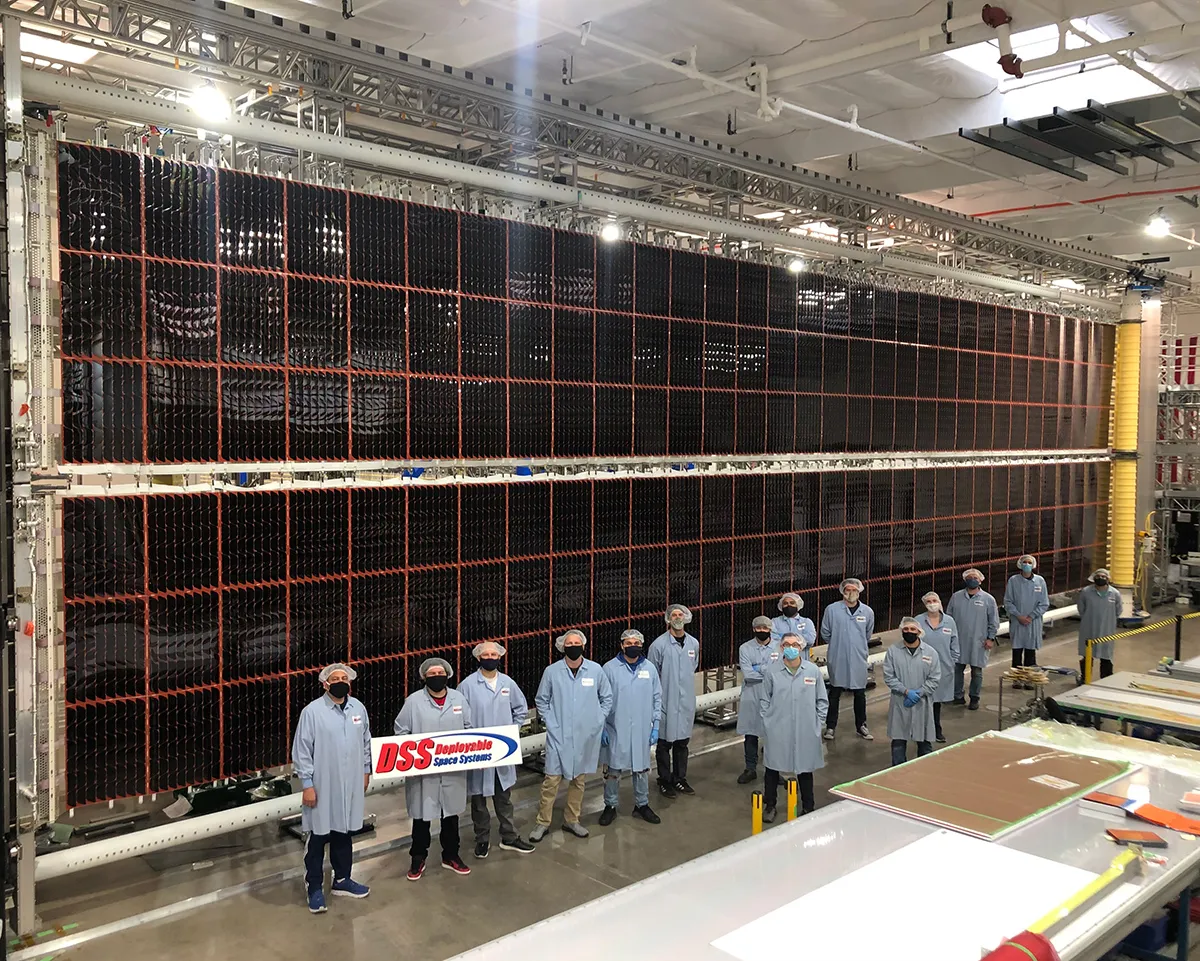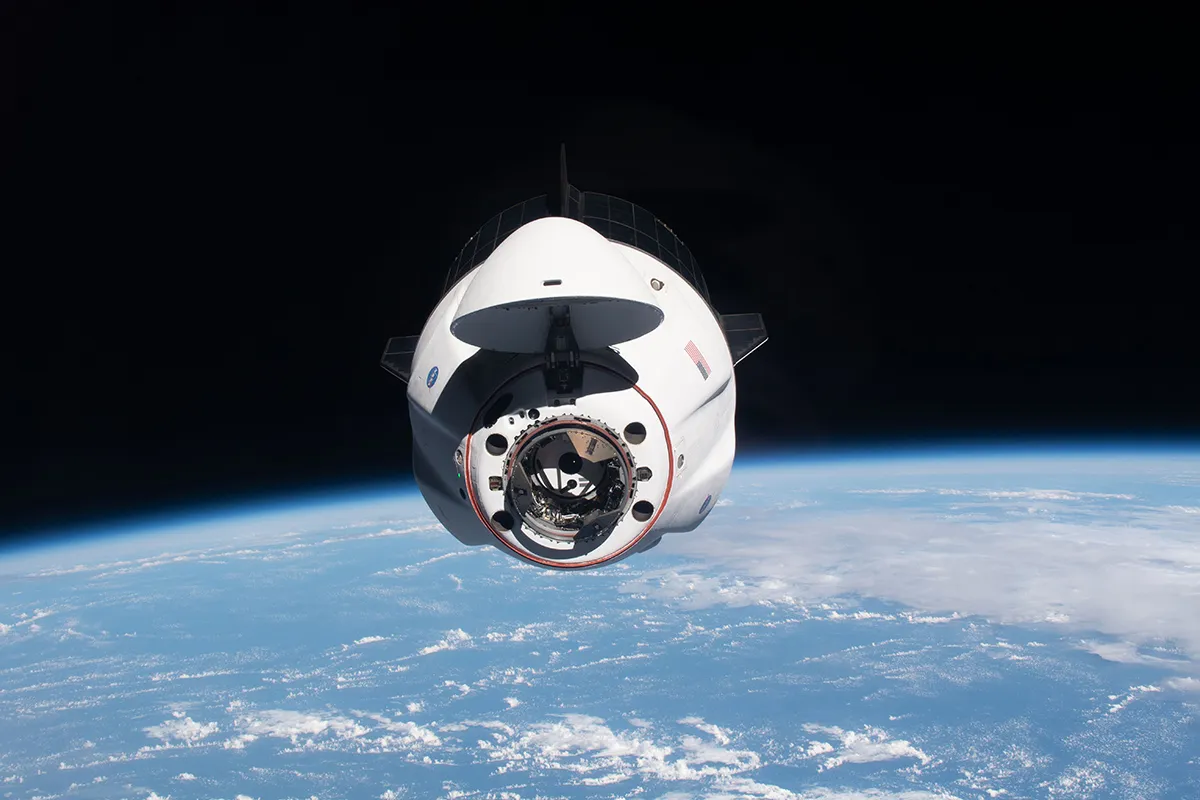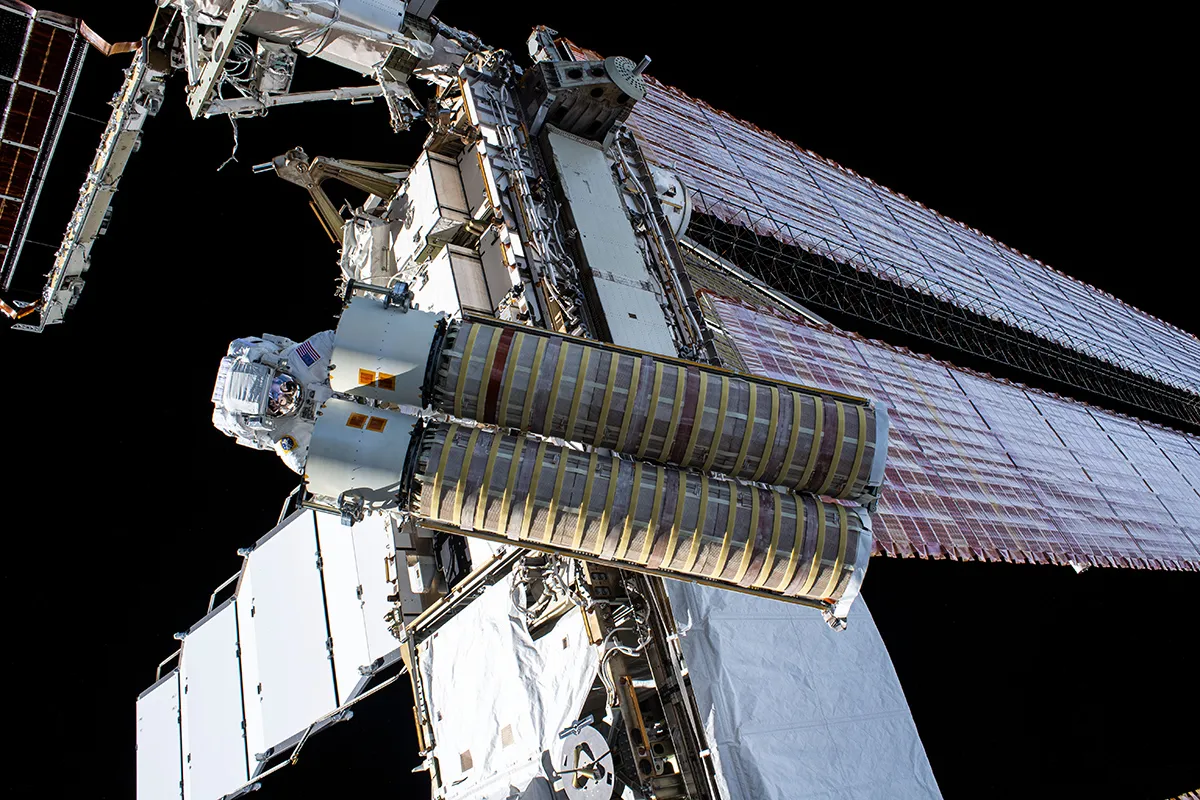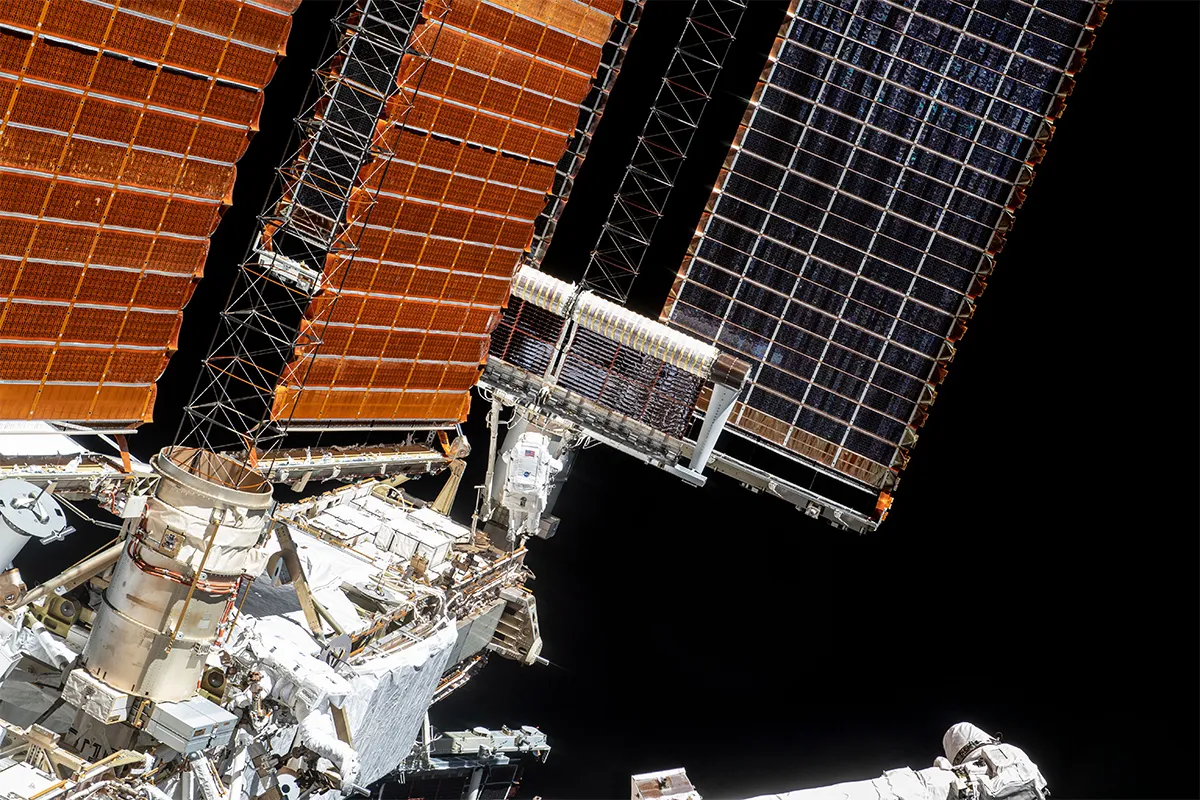Two astronauts from NASA and the European Space Agency have successfully installed the first of six new solar arrays on the International Space Station (ISS).
The mission is the first step in a programme to increase the power generation capacity of the ISS to meet future demands including Artemis – NASA’s planned crewed mission to the Moon, currently scheduled for 2023.
Some of original arrays have been in place for 20 years and are showing signs of age. The six new arrays will be installed directly on top of the existing ones and generate roughly the same amount of power despite only being half the size.
Once fully installed, the arrays will be able to supply power to the ISS until 2030.

The solar arrays were constructed by engineers at Deployable Space System’s facility in Goleta, California and each measure 19 x 6 metres. The cells that make up the arrays were manufactured by Spectrolab, a company based around 100 miles down the road in Sylmar, and are some of the most powerful ever launched into space.

Commander Shane Kimbrough, along with pilot Megan McArthur and mission specialists Akihiko Hoshide and Thomas Pesquet, travelled to the ISS aboard a SpaceX Crew Dragon Endeavour spacecraft in April to prepare for the installation.

While the station’s original arrays fold up and deploy in an accordion-like manner, the new arrays roll out like a carpet from inside a cylindrical canister.

NASA’s Kimbrough and the European Space Agency’s Pesquet spent six hours and 28 minutes on the outside of the station, slowly unfurling the new array and moving it into place. It was the eighth spacewalk for Kimbrough, the fourth for Pesquet, and the fourth they have conducted together.
The remaining arrays are set to be installed by ISS astronauts later this year.
Read more about the ISS: